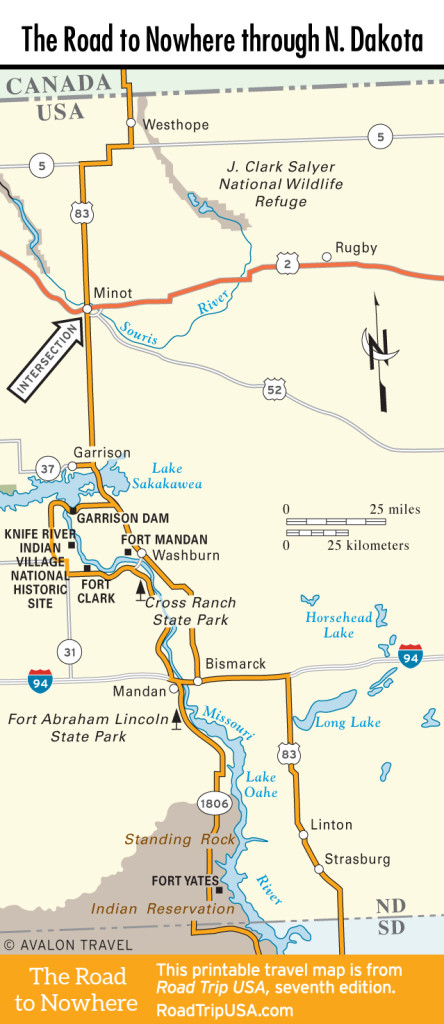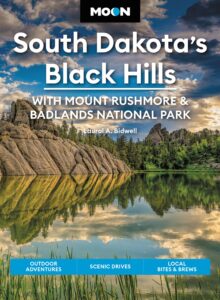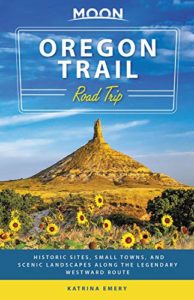The Enchanted Highway and Fort Mandan
Detour: The Enchanted Highway
Standing out against the badlands of western North Dakota, the world’s largest collection of roadside statuary enlivens an otherwise unexciting swath of the northern Great Plains. Standing along a quiet country road outside the town of Regent (pop. 156), some 30 mi (48 km) south of I-94 exit 72, the unexpected visual delights of the Enchanted Highway have earned it a place in Guinness World Records for the World’s Largest Scrap Metal Sculptures, as well as in the hearts of many a long-distance road-tripper. Created beginning in 1989 by former schoolteacher and self-taught metal sculptor Gary Greff, these are some of the largest works of art in the world—a flock of geese reaches more than 100 ft (30.4 m) into the air, while the Tin Family stands some 45 t (13.7 m) tall along the roadside. The Enchanted Highway is, well, simply enchanting, and definitely worth the detour.
Fort Mandan
Back on the east bank of the Missouri River, north of Washburn and 2 mi (3.2 km) west of US-83, Fort Mandan is a reconstruction of the winter quarters Lewis and Clark used in 1804- 1805. Arriving here at the end of October after a tediously difficult six-month slog upstream from St. Louis, the expedition set up camp, which consisted of rough-hewn log cabins arranged to form a triangular palisade surrounded by a 16-foot-high wall. Here the 33 men spent the winter, making friendly contact with nearby Native American communities, most significantly those of the Knife River site—where Lewis and Clark hired the French fur-trapper Charbonneau and his young wife, Sacagawea, who helped guide them across the Rockies.
The actual site of Lewis and Clark’s encampment, some 10 mi (16.1 km) upstream across the river from the site of Fort Clark, was long ago washed away by the ever-shifting Missouri River, but this full-scale, historically accurate replica fort was built in the 1970s by local history buffs, and recently restored and expanded as part of the Lewis & Clark Interpretive Center in Washburn. Constructed and furnished, with some original pieces, to look how it did when Lewis and Clark camped here, the fort gives a good sense of the difficulties the explorers faced. History aside, the wild Missouri River frontage is a great place to play Tom Sawyer—on summer afternoons you’ll see barefoot kids, shirtless in overalls, fishing and mucking along the banks. Another insight into local life is provided by the visitors center, which is constructed almost entirely out of recycled byproducts of the coal-mining industry.
Travel Map of the Road to Nowhere through North Dakota
















